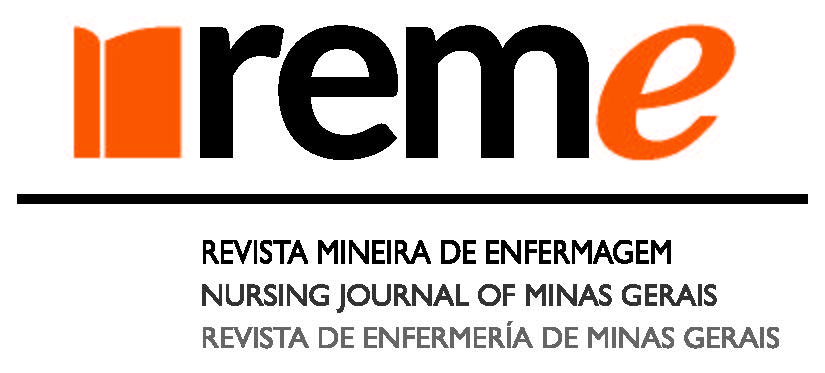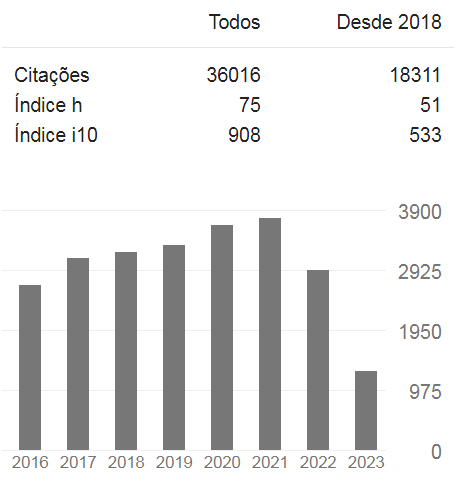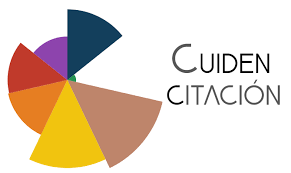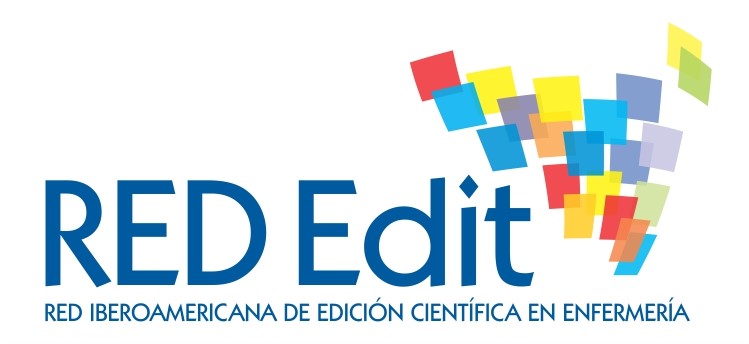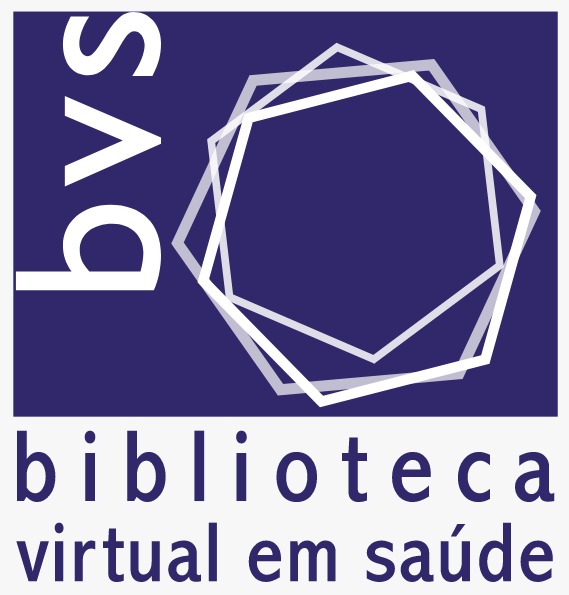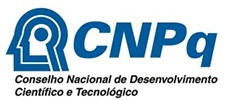Tecnologia educacional digital para prevenção do HIV/aids entre adolescentes e jovens:
Revisão de escopo
DOI:
https://doi.org/10.35699/2316-9389.2024.39889Keywords:
Educational Technology, HIV, Adolescent Health, Disease PreventionAbstract
Objective: to map scientific evidence on the use of digital educational technology in health related to HIV/AIDS, aimed at adolescents and young adults. Method: this is a scoping review based on the review method guided by the Joanna Briggs Institute. The survey of studies was carried out through access to five databases focused on the health area. Results: 1,147 studies were identified, of which only 12 were considered eligible to compose the final sample. It was found that digital educational technologies are diverse, with each study addressing a single type of technological resource, namely: educational game, multimedia application, computerized program, online module, application prototype, video chat, electronic learning, interactive media for disseminating messages, virtual environments, short messages, videos and websites. The content and technologies were aimed at Pre-Exposure Prophylaxis (PrEP), reducing adolescent sexual behavior, knowledge about HIV/AIDS, seeking to promote HIV/STI testing and condom use. Conclusion: digital educational health technologies were mapped and grouped into gadgets (devices), software and augmented reality. It is noteworthy that this study contributed to demonstrating the different types of health technologies regarding HIV//AIDS aimed at adolescents and young people. It is worth highlighting that the topics most covered in the studies involved ways of preventing HIV/AIDS and behaviors to reduce risk.
Downloads
References
Zhang L, Yu H, Luo H, Rong W, Meng X, Du X, et al. HIV/AIDS – Related Knowledge and Attitudes Among Chinese College Students and Associated Factors: A Cross-Sectional Study. Front Public Health [Internet]. 2022[citado em 2022 mar. 27]. Disponível em: https://doi.org/10.3389/fpubh.2021.804626
Waymack JR, Sundaresham V. Acquired Immune Deficiency Syndrome. In: StatPearls. Treasure Island (FL): StatPearls Publishing; 2021[citado em 2022 mar. 27]. Disponível em: https://www.ncbi.nlm.nih.gov/books/NBK537293/
Brasil GB, Rodrigues ILA, Nogueira LMV, Palmeira IP. Educational technology for people living with HIV: validation study. Rev Bras Enferm [Internet]. 2018[citado em 2022 mar. 28];71(Suppl 4):1657-62. Disponível em: http://dx.doi.org/10.1590/0034-7167-2017-0824
Ministério da Saúde (BR). Boletim Epidemiológico de HIV/AIDS. Brasília: Ministério da Saúde; 2021[citado em 2022 mar. 28]. Disponível em: http://www.aids.gov.br/pt-br/pub/2021/boletim-epidemiologico-hivaids-2021
Jesus GJ, Caliari JS, Oliveira LB, Queiroz AAFLN, Figueiredo RM, Reis RK. Construction and validation of educational material for the health promotion of individuals with HIV. Rev Latino-Am Enferm [Internet]. 2020[citado em 2022 mar. 28];28:e3322. Disponível em: http://dx.doi.org/10.1590/1518-8345.3748.3322
Sallam M, Alabbadi AM, Abdel-Razeq S, Battah K, Malkawi L, Al-Abbadi MA, et al. HIV Knowledge and Stigmatizing Attitude towards People Living with HIV/AIDS among Medical Students in Jordan. Int J Environ Res Public Health [Internet]. 2022[citado em 2022 abr. 3];19:745. Disponível em: https://doi.org/10.3390/ijerph19020745
Ministério da Saúde (BR). Prevenção Combinada do HIV/Sumário Executivo. Brasília: Ministério da Saúde; 2017[citado em 2023 set. 22]. Disponível em: https://telelab.aids.gov.br/index.php/biblioteca-telelab/item/download/119_d94614e0823cc22128d1eae3ace8eecb#:~:text=POPULA%C3%87%C3%95Es%2DCHAVE&text=%C2%BB%20Gays%20e%20outros%20HSH%3B%20%C2%BB,liberdade%3B%20%C2%BB%20Trabalhadoras%20do%20sexo.
Piran CMG, Fonseca BS, Dias JR, Schibukawa BMC, Rissi G, Higarashi IH, et al. Digital educational technology on HIV/AIDS for adolescents and young adults: a protocol of scope review. Online Braz J Nurs [Internet]. 2022[citado em 2023 set. 22];21(Suppl 1):e20226564. https://doi.org/10.17665/1676-4285.20226564
Lima ACMACC, Bezerra KC, Sousa DMN, Vasconcelos CTM, Coutinho JFV, Oriá MOB. Educational technologies and practices for prevention of vertical HIV transmission. Rev Bras Enferm [Internet]. 2018[citado em 2022 abr. 3];71(Suppl 4):1759-67. Disponível em: http://dx.doi.org/10.1590/0034-7167-2016-0333
Dienlin T, Johannes N. The impact of digital technology use on adolescent well-being. Dialogues Clin Neurosci [Internet]. 2020[citado em 2022 abr. 3];22(2):135-42. Disponível em: http://dx.doi.org/10.31887/DCNS.2020.22.2/tdienlin
Peters MDJ, Godfrey C, McInerney P, Munn Z, Tricco AC, Khalil, H. Chapter 11: Scoping Reviews (2020 version). In: Aromataris E, Munn Z, editors. JBI Manual for Evidence Synthesis. 2020 [citado em 2021 maio 28]. Disponível em: https://doi.org/10.46658/JBIMES-20-12
World Health Organization. Adolescent Heath. Genova: WHO; 2017[citado em 2021 jun. 02]. Disponível em: https://www.who.int/health-topics/adolescent-health/#tab=tab_1
Tricco AC, Lillie E, Zarin W, O'Brien KK, Colquhoun H, Levac D, et al. PRISMA extension for scoping reviews (PRISMA-ScR): checklist and explanation. Ann Intern Med [Internet]. 2018[citado em 2021 jun. 02];169(7):467-73. Disponível em: http://www.prisma-statement.org/Extensions/ScopingReviews
LeGrand S, Knudtson K, Benkeser D, Muessig K, Mcgee A, Sullivan PS, et al. Testing the Efficacy of a Social Networking Gamification App to Improve Pre-Exposure Prophylaxis Adherence (P3: Prepared, Protected, emPowered): Protocol for a Randomized Controlled Trial. JMIR Res Protoc [Internet]. 2018[citado em 2021 jun. 21]; 7(12):e10448. Disponível em: http://dx.doi.org/10.2196/10448
Ybarra ML, Prescott TL, Phillips GL, Bull SS, Parsons JT, Mustanski B. Pilot RCT Results of a mHealth HIV Prevention Program for Sexual Minority Men's Adolescents. Pediatria [Internet]. 2017[citado em 2021 jun. 21];140(1):e20162999. Disponível em: http://dx.doi.org/10.1542/peds.2016-2999
Klein CH, Card JJ. Preliminary efficacy of a computer-delivered HIV prevention intervention for African American teenage females. AIDS Educ Anterior [Internet]. 2011[citado em 2021 jun. 21];23(6):564–76. Disponível em: https://doi.org/10.1521/aeap.2011.23.6.564
Bauermeister JA, Pingel ES, Jadwin-Cakmak L, Harper GW, Horvath K, Weiss G, et al. Acceptability and preliminary efficacy of a tailored online HIV/STI testing intervention for young men who have sex with men: the Get Connected! program. AIDS Behav [Internet]. 2015[citado em 2021 jun. 21];19(10):1860-74. Disponível em: http://dx.doi.org/10.1007/s10461-015-1009-y
Enah C, Piper K, Moneyham L. Qualitative evaluation of the relevance and acceptability of a web-based HIV prevention game for rural adolescents. J Pediatr Nurs [Internet]. 2015[citado em 2021 jun. 21];30(2):321-8. Disponível em: http://dx.doi.org/10.1016/j.pedn.2014.09.004
Chib AI, Lwin OM, Lee Z, Ng VW, Wong PHP. Learning AIDS in Singapore: Examining the Effectiveness of HIV / AIDS Efficacy Messages for Adolescents Using ICTs. J Knowl Manag [Internet]. 2010[citado em 2021 jun. 21];2(2):169-87. Disponível em: https://doi.org/10.34105/j.kmel.2010.02.013
Bonett S, Connochie D, Golinkoff JM, Horvath KJ, Bauermeister JA. Paradata Analysis of an eHealth HIV Testing Intervention for Young Men Who Have Sex With Men. AIDS Educ Prev [Internet]. 2018 [citado em 2021 jun. 21];30(5):434-47. Disponível em: https://doi.org/10.1521/aeap.2018.30.5.434
DiClemente RJ, Bradley E, Davis TL, Brown JL, Ukuku M, Vendas JM, et al. Adoption and implementation of a computer-delivered HIV/STD risk-reduction intervention for African American adolescent females seeking services at county health departments: implementation optimization is urgently needed. J Acquir Immune Defic Syndr [Internet]. 2013[citado em 2021 jun. 21];63(Suppl 1):S66-S71. Disponível em: https://doi.org/10.1097/QAI.0b013e318292014f
Villegas N, Santisteban D, Cianelli R, Ferrer L, Ambrosia T, Peragallo N, et al. Pilot testing an internet-based STI and HIV prevention intervention with Chilean women. J Nurs Scholarsh [Internet]. 2015[citado em 2021 jun. 21];47(2):106-16. Disponível em: https://doi.org/10.1111/jnu.12114
Zyl HV, Visser P, van Wyk E, Laubscher R. Comparing elearning and classroom instruction on HIV/AIDS knowledge uptake and internalizing among South African and Irish pupils. Health Educ J [Internet]. 2014[citado em 2021 jun. 21];73(6):746-54. Disponível em: https://doi.org/10.1177/0017896912471045
Gamarel KE, Darbes LA, Hightow-Weidman L, Sullivan P, Stephenson R. The Development and Testing of a Relationship Skills Intervention to Improve HIV Prevention Uptake Among Young Gay, Bisexual, and Other Men Who Have Sex With Men and Their Primary Partners (We Prevent): Protocol for a Randomized Controlled Trial. JMIR Res Protoc [Internet]. 2019[citado em 2021 jun. 21];8(1):e10370. Disponível em: https://doi.org/10.2196/10370
Lightfoot M, Comulada WS, Stover G. Computerized HIV preventive intervention for adolescents: indications of efficacy. Am J Public Health [Internet]. 2007[citado em 2021 jun. 21];97(6):1027-30. Disponível em: https://doi.org/10.2105/AJPH.2005.072652
Dourado JVL, Arruda LP, Ponte KMA, Silva MAM, Ferreira Junior AR, Aguiar FAR. Tecnologias para a educação em saúde com adolescentes: revisão integrativa. Av Enferm [Internet]. 2021[citado em 2022 abr. 14];39(2):235-54. Disponível em: http://doi.org/10.15446/av.enferm.v39n2.85639
Tavares APC, Leite BS, Silveira IA, Santos TD, Brito WAP, Camacho ACLF. Analysis of Brazilian publications on distance education in nursing: integrative review. Rev Bras Enferm [Internet]. 2018[citado em 2018 jul. 31];71(1):214-22. Disponível em: https://doi.org/10.1590/0034-7167-2016-0454
Garett R, Young SD. Potential application of conversational agents in HIV testing uptake among high-risk populations. J Public Health [Internet]. 2022[citado em 2022 abr. 14];fdac020. Disponível em: https://doi.org/10.1093/pubmed/fdac020
Gonçalves GAA, Silva KVLG, Santos RL, Machado MFAS, Rebouças CBA, Silva VM. Percepções de facilitadores sobre as tecnologias em saúde utilizadas em oficinas educativas com adolescentes. REME - Rev Min Enferm [Internet]. 2020[citado em 2022 abr. 14];24:e-1273. Disponível em: https://doi.org/10.5935/1415- 2762.20200002
Chenneville T, Gabbidon K, Drake H, Rodriguez L. Preliminary findings from the HIV SEERs project: a community-based participatory research program to reduce HIV stigma among youth in Kenya. J Assoc Nurses AIDS Care [Internet]. 2019[citado em 2022 abr. 14];30(4):462-73. Disponível em: https://doi.org/10.1097/JNC.0000000000000019
Haruna H, Hu X, Chu SKW, Mellecker RR, Gabriel G, Ndekao PS. Improving sexual health education programs for adolescent students through game-based learning and gamification. Int J Environ Res Public Health [Internet]. 2018[citado em 2022 abr. 14];15(9):2027. Disponível em: https://doi.org/10.3390/ijerph15092027
Castro MJ, López M, Cao MJ, Fernández-Castro M, García S, Frutos M, et al. Impact of educational games on academic outcomes of students in the Degree in Nursing. PLoS One [Internet]. 2019 [citado em 2022 abr 14];14(7):e0220388. Disponível em: https://doi.org/10.1371/journal.pone.0220388
Torres AAL, Bezerra JAA, Abbad GS. Uso de tecnologias de informação e comunicação no ensino na saúde: revisão sistemática 2010- 2015. Rev Gestão Saúde [Internet]. 2015[cited 2020 abr. 12];6(2):1883-9. Disponível em: https://periodicos.unb.br/index.php/rgs/article/view/3030
Yap L, Jones J, Donovan B, Nathan S, Sullivan E, Davison S, et al. The sexual behaviours of adolescents aged between 14 and 17 years involved with the juvenile justice system in Australia: A community-based survey. PLoS One [Internet]. 2020[citado em 2021 abr. 12];15(12):e0243633. Disponível em: https://doi.org/10.1371/journal.pone.0243633
Neumann DMC, Missel RJ. Família digital: a influência da tecnologia nas relações entre pais e filhos adolescentes. Pensando fam [Internet]. 2019[citado em 2021 abr. 12]; 23(2):75-91. Disponível em: http://pepsic.bvsalud.org/scielo.php?script=sci_arttext&pid=S1679-494X2019000200007
Stevanim LF. Exclusão nada remota: desigualdades sociais e digitais dificultam a garantia do direito à educação na pandemia. RADIS [Internet]. 2020[citado em 2021 abr. 12];215:10-5. Disponível em: https://www.arca.fiocruz.br/handle/icict/43180
Appenzeller S, Menezes FH, Santos GG, Padilha RF, Graça HS, Bragança JF. Novos tempos, novos desafios: estratégias para equidade de acesso ao ensino remoto emergencial. Rev Bras Educ Med [Internet]. 2020[citado em 2021 abr. 12];44(1):e0155. Disponível em: https://doi.org/10.1590/1981-5271v44.supl.1-20200420
Sousa MG, Oliveira EML, Coelho MMF, Miranda KCL, Henriques ACPT, Cabral RL. Validação de jogo educativo sobre sexualidade para adolescentes. Rev Fund Care Online [Internet]. 2018[citado em 2021 abr. 12];10(1):203-9. Disponível em: https://pesquisa.bvsalud.org/portal/resource/pt/biblio-908419
Doyle AM, Mchunu L, Koole O, Mthembu S, Dlamini S, Ngwenya N, et al. Primary healthcare and school health service utilisation by adolescents and young adults in KwaZulu-Natal, South Africa. BMC Health Serv Res [Internet]. 2019[citado em 2021 abr. 12];19:905. Disponível em: https://bmchealthservres.biomedcentral.com/articles/ 10.1186/s12913-019-4559-2
Alcântara CM, Silva ANS, Pinheiro PNC, Queiroz MVO. Tecnologias digitais para promoção de hábitos alimentares saudáveis dos adolescentes. Rev Bras Enferm [Internet]. 2019[citado em 2021 abr. 14];72(2):513-20. Disponível em: https://doi.org/10.1590/0034-7167-2018-0352
Additional Files
Published
How to Cite
Issue
Section
License
Copyright (c) 2024 REME-Revista Mineira de Enfermagem

This work is licensed under a Creative Commons Attribution 4.0 International License.

